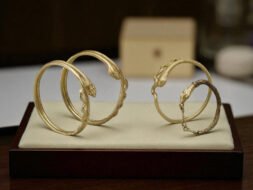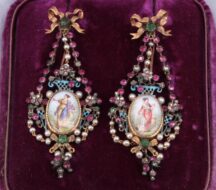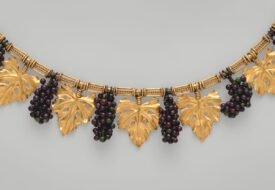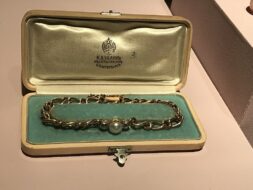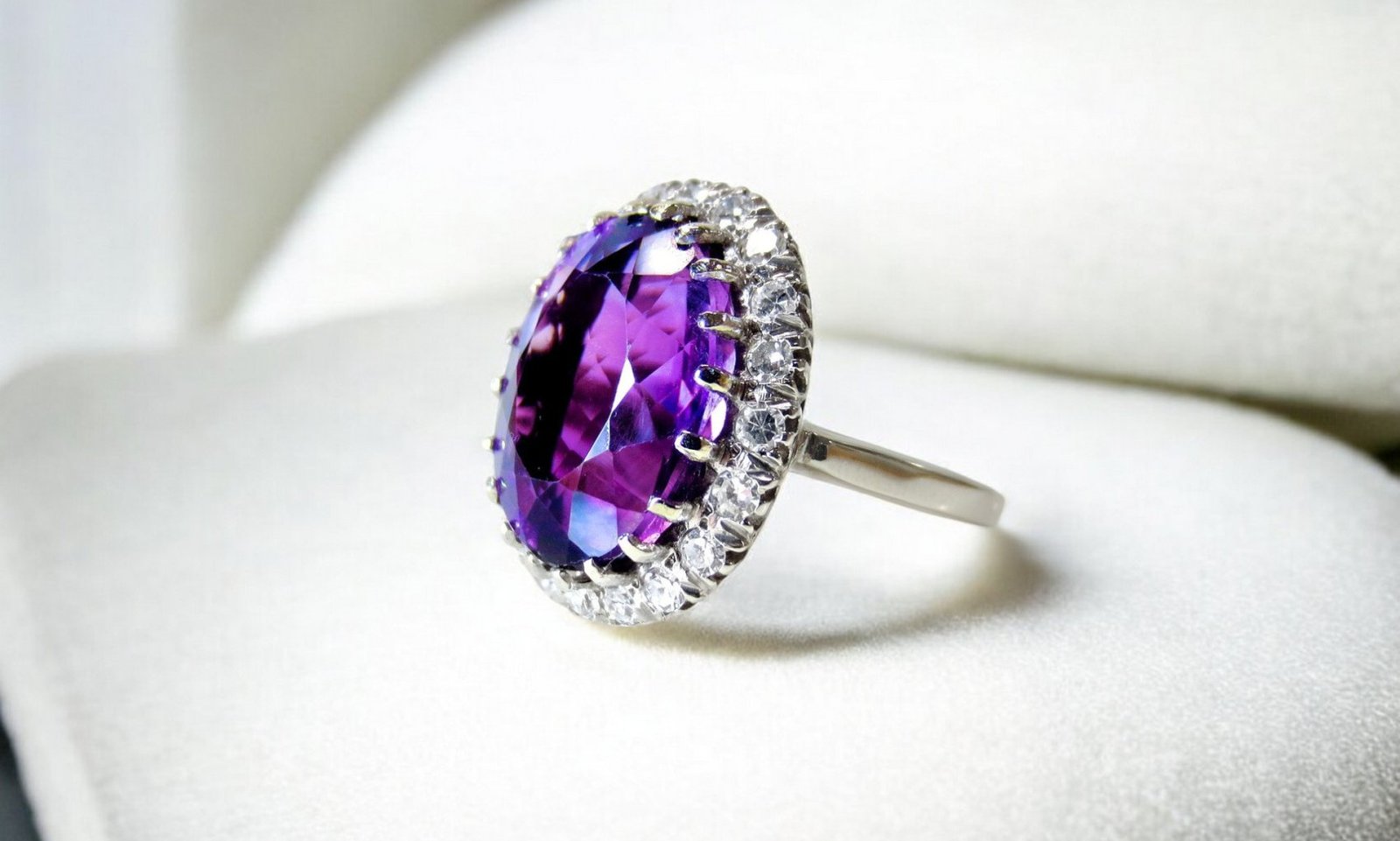
06 Mar Custom and Antique Amethyst Rings & Jewelry
We recently restored an antique amethyst ring from the Victorian era. This reminded us that the amethyst gemstone is one we haven’t discussed yet on our La Jolla jewelry blog. So, let’s correct that oversight now, because amethyst is a beautiful gemstone worthy of consideration for custom jewelry, especially if you are looking for budget-friendly options that don’t sacrifice beauty.
The History of Amethyst Jewelry
From ancient civilizations to the modern-day, amethysts have adorned royalty, fashionistas, and spiritual seekers alike. Renowned for their stunning purple hues, these gems symbolize luxury, protection, and clarity.
Throughout the centuries, amethysts have been treasured for their mystical properties and beauty. These gems have long been used in intricate jewelry pieces, from intricate Victorian designs to sleek contemporary settings. Meanwhile myths and legends have surrounded amethysts, from their association with Bacchus, the god of wine, to their purported healing powers.
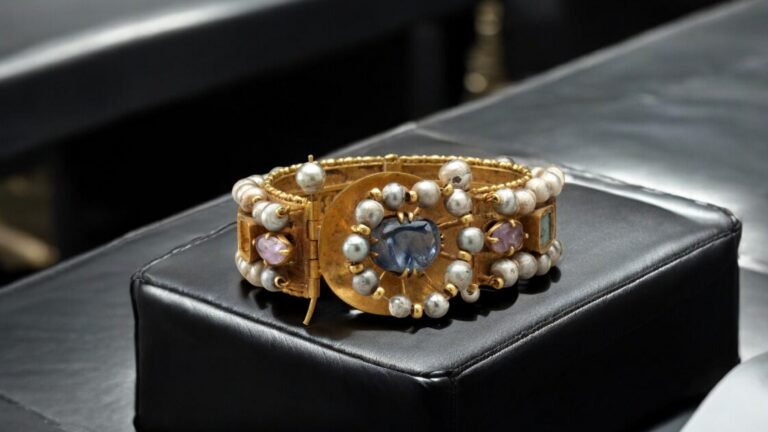
Symbolism & Early Uses of Amethyst in Jewelry
The name “amethyst” derives from the ancient Greek word “amethystos,” which translates to “not intoxicated.” This etymology reveals the gemstone’s early association with sobriety and clarity. Ancient Greeks believed that wearing amethyst could prevent drunkenness and promote clear thinking, making it a popular choice among those who regularly indulged in wine.
This belief was further reinforced by the association of amethyst with Bacchus, the Roman god of wine, who was often depicted with the gemstone. Thus, amethyst became a symbol of moderation and balance, revered for its ability to instill calmness and clarity of mind.
Historically, amethyst has been used in various forms of jewelry dating back to antiquity. Ancient Egyptians adorned themselves with amethyst amulets, believing in their protective properties against harm and evil spirits.
These amulets often had intricate carvings and were worn as a sign of status and wealth. The gemstone’s popularity spread across cultures, with the Romans also embracing amethyst for its beauty and believed magical qualities. In these early societies, amethyst was not merely an ornament but a talisman that offered protection, strength, and wisdom.
As civilizations evolved, so did the use of amethyst in jewelry. It became a favored choice in the crowns and regalia of royalty, symbolizing power and prestige. In medieval Europe, amethyst was regarded as a stone of the clergy, frequently used in ecclesiastical jewelry.
This connection to the church further solidified its status as a gem of spirituality and divine connection. The early uses of amethyst in jewelry reveal its multifaceted significance, blending beauty with profound symbolism, making it a cherished gemstone throughout history.
Amethyst in Antique Jewelry Design
The allure of amethyst reached its zenith during the Victorian era, where intricate designs became the hallmark of jewelry craftsmanship. Victorian jewelers embraced the gemstone, often setting it in elaborate gold settings adorned with floral motifs, intricate filigree work, and other ornamental details.
These designs were not just about aesthetics; they told stories, conveyed emotions, and served as personal mementos for the wearer. Amethyst, with its rich purple tones, complemented the romantic nature of Victorian jewelry, making it a popular choice for brooches, pendants, and rings.
During this period, amethyst’s popularity was partly fueled by its affordability compared to other gemstones, such as diamonds and sapphires. This accessibility allowed more individuals to incorporate amethyst into their collections, leading to a diverse range of designs that reflected personal styles and societal trends.
The use of amethyst in mourning jewelry also became prevalent, with pieces crafted to commemorate lost loved ones. These designs often featured ornate settings that encased the gemstone, symbolizing both loss and remembrance.
As the art of jewelry design continued to evolve, the Art Nouveau and Art Deco movements introduced new interpretations of amethyst. Art Nouveau emphasized organic forms and flowing lines, often incorporating amethyst into designs that celebrated nature and femininity.
In contrast, the Art Deco era favored geometric shapes and bold colors, with amethyst being used as a striking contrast to diamonds and other gemstones. This fusion of styles showcased the versatility of amethyst, allowing it to transcend trends while maintaining its timeless appeal.
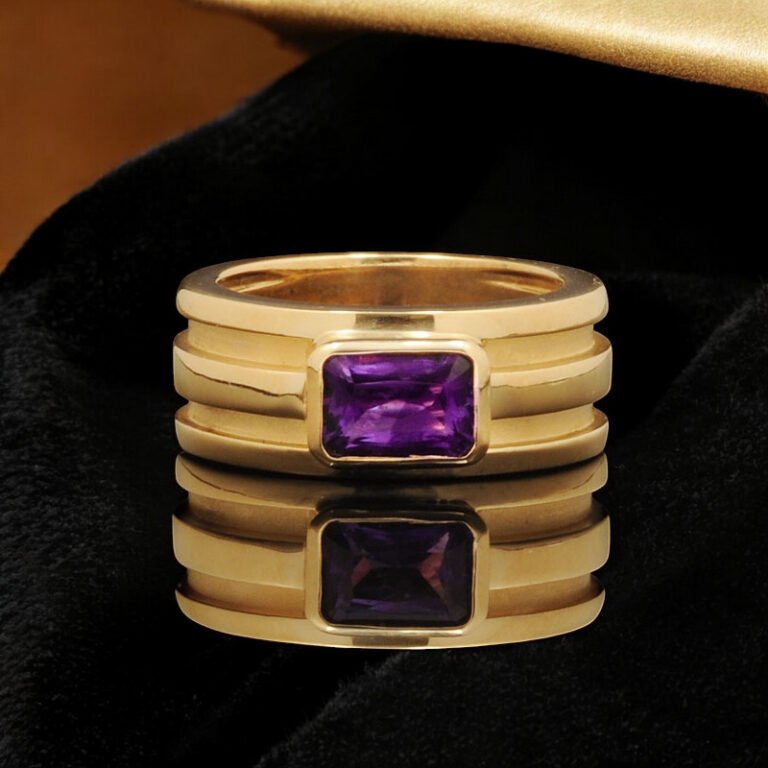
Famous Historical Figures Associated with Amethyst Jewelry
Throughout history, numerous notable figures have been linked to amethyst jewelry, each leaving their mark on its legacy. One such figure is Queen Elizabeth I of England, who was known for her extravagant collection of jewels, including amethyst pieces.
She recognized amethyst’s beauty and rarity, often wearing it to symbolize her royal status. Her affinity for amethyst helped cement its place in the pantheon of precious gemstones, elevating its status among the elite and contributing to its popularity in European courts.
Another significant figure is Catherine the Great of Russia, who was not only a patron of the arts but also an avid collector of gemstones. Her love for amethyst was evident in the exquisite jewelry pieces she commissioned, often featuring the stone in grand designs.
The Russian Imperial Court embraced amethyst as a symbol of power and luxury, further solidifying its place in history. Catherine’s influence extended beyond her reign, inspiring future generations to appreciate and collect amethyst jewelry.
In the realm of literature and culture, amethyst has also found its way into the hearts of artists and writers. The famous writer, Oscar Wilde, often referenced amethyst in his works, associating it with beauty and mysticism.
His appreciation for the gemstone mirrored the sentiments of his time, where amethyst was seen not only as an ornament but also as a muse for creativity and inspiration. These historical figures and their connections to amethyst jewelry illustrate the enduring legacy of this enchanting gemstone across different realms of society.
Amethyst Pricing & Factors Influencing Value
The value of amethyst jewelry varies significantly based on several factors, including color, clarity, size, and origin. The most sought-after amethysts exhibit a deep, rich purple hue, often characterized by a slight reddish tint.
This vibrant color enhances the gemstone’s appeal and plays a crucial role in determining its market value. Lighter shades of amethyst, while still beautiful, typically command lower prices due to their less desirable color saturation.
Clarity is another vital aspect influencing the value of amethyst. High-quality amethyst should be free from significant inclusions or blemishes, allowing light to pass through the stone effortlessly. The more transparent the gemstone, the higher its value.
Additionally, the size of the amethyst plays a significant role in pricing; larger stones are rarer and, therefore, more valuable. Buyers often seek out larger, flawless stones for statement pieces, driving up their market value.
The origin of the amethyst also affects its pricing. Brazilian amethysts, known for their depth of color and clarity, are highly sought after in the market. However, other origins, such as Zambian or Uruguayan amethysts, can also produce exceptional stones that may vary in price.
Collectors often look for specific origins associated with certain characteristics, contributing to the overall valuation. Understanding these factors is essential for anyone looking to invest in amethyst jewelry, ensuring they appreciate the true value of this stunning gemstone.
A Victorian era ring which C. Blackburn completely restored by re-cutting the amethyst and replacing missing seed pearls.
Modern Trends in Amethyst Jewelry
As we move into the contemporary era, amethyst continues to captivate jewelry enthusiasts with its versatility and beauty. Modern trends have shifted towards minimalist designs, where amethyst is often featured in sleek, understated settings that allow the gemstone to take center stage.
This trend resonates with a growing appreciation for simplicity and elegance, showcasing amethyst’s natural beauty without overwhelming embellishments. Rings, necklaces, and earrings are crafted with clean lines and geometric shapes, appealing to those who favor modern aesthetics.
A fusion of traditional craftsmanship with modern technology has led to innovative designs in amethyst jewelry. Advances in cutting and setting techniques allow for more intricate and delicate designs, pushing the boundaries of creativity.
Jewelry designers continue to experiment with unconventional cuts and placements, resulting in unique pieces that stand out in a crowded marketplace. This blend of tradition and innovation ensures that amethyst remains relevant, continuously evolving while honoring its rich history.
Custom Amethyst Jewelry
Contact C. Blackburn Jewelers today, and let us help you create a custom made amethyst ring, earrings, or pendant. We can create a wide variety of amethyst jewelry, providing beautiful budget-friendly options that make our custom jewelry surprisingly affordable.
You will work directly with our owner Carl Blackburn, who has decades of experience designing amethyst jewelry, as well as restoring antique amethyst jewelry to stunning condition.
Leave him a voicemail at 858-251-3006 or send him a text message: 619-723-8589. You can also use the contact form below to send us an email. We look forward to hearing from you.



